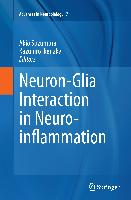- Start
- Neuron-Glia Interaction in Neuroinflammation
Neuron-Glia Interaction in Neuroinflammation
Angebote / Angebote:
Accumulation of glia, gliosis, in various neurological disorders is not a static scar, but actively involved in pathogenesis of various neurological and psychiatric disorders, where glial cells produce both inflammatory and neurotrophic factors. These factors may play a role in neuronal damage, but also have a protective and reparative function by inducing neuroinflammation. However, definition as well as the mechanisms of neuroinflammation is not yet clear. We first define acute, chronic and non-classical neuroinflammation.Glial cells are activated by a variety of stimuli via receptors on glial cells. Toll like receptors (TLR) are one of these receptors. In response to harmful stimuli, neurons produce factors as either “eat-me” or “help-me” signals. These factors include cytokines, chemokines and damage-associated molecular pattern (DAMP). Some of them activate glial cells via TLR, and function to protect neurons or further induce neuroinflammation. Thus, the interaction between neuron-glia and glia-glia is a main feature of neuroinflammation. Glial cells communicate with other glial or neural cells via gap-junctions. The communication may also be important for the understanding of neuroinflammation. Oligodendrocytes-neurons communication may be critical in either myelination or demyelination. Damage of blood-brain barrier (BBB) is common feature of both inflammatory and degenerative neurological disorders. Thus, relation of BBB damage and functions of glial cell may also be important in the development of neuroinflammation. In this book, we focused on neuron-glia interaction of various aspects for understanding of pathophysiology of neuroinflammation in development of inflammatory as well as degenerative neurological disorders.
Lieferbar in ca. 20-45 Arbeitstagen
